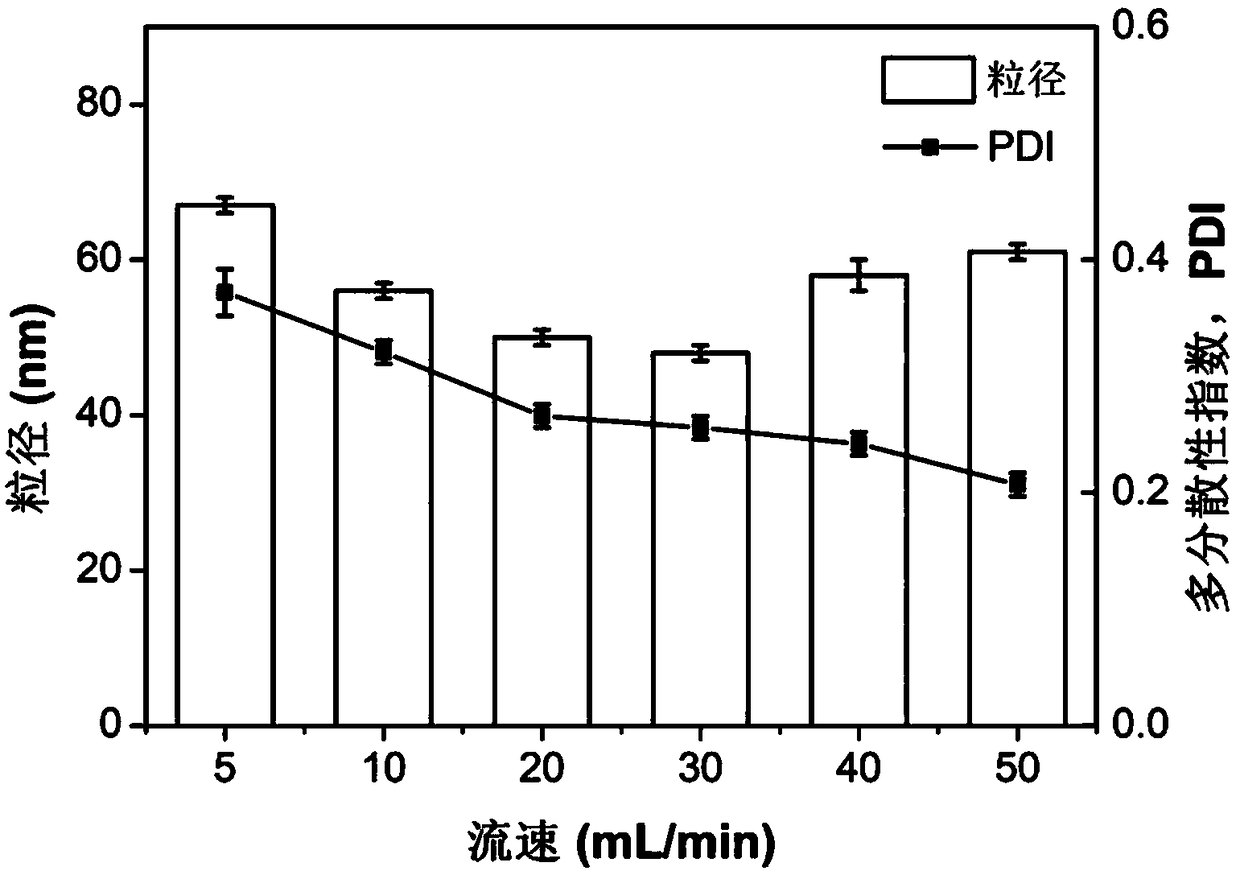Polypeptide or protein nanoparticles based on hydrogen-bonded complexation, and preparation method and application thereof
A protein and complexation technology, applied in the field of biomedicine, can solve the problems of low drug loading efficiency, inability to effectively wrap, affect the biological activity of peptide and protein drugs, etc.
- Summary
- Abstract
- Description
- Claims
- Application Information
AI Technical Summary
Problems solved by technology
Method used
Image
Examples
Embodiment 1
[0082] Example 1 Preparation of exenatide-loaded nanoparticles and enteric-coated microcapsule preparations using FNC technology
[0083] 1. Preparation of tannic acid (TA) and exenatide (EXE) nanocomposite cores
[0084] TA was dissolved in deionized water at a concentration of 0.1-0.9 mg / mL. EXE was dissolved in 0.2% acetic acid solution (HAc), and then the pH value was adjusted to different pH values (5.5-6.8) with NaOH solution, and the concentration of EXE solution was 0.3 mg / mL. The TA solution is distributed in the first and second channels, and the EXE solution is distributed in the third and fourth channels, such as figure 1 As shown, the flow rate of the four channels is the same, adjust the flow rate of the channel, 5mL / min, 10mL / min, 20mL / min, 30mL / min, 40mL / min, 50mL / min, so that the two solutions pass through the four channels to the vortex mixing area Mix to obtain the nanocomposite core (NC) of TA and EXE.
[0085] figure 2 Shown is the effect of flow ra...
Embodiment 2
[0097] Embodiment 2 in vitro drug release experiment
[0098] Three preparations of NC, NP and E-NP were prepared under optimal conditions using RITC-labeled EXE for use. The E-NP preparation was placed in HCl solution with pH=2.5, incubated at 37°C in a shaker at 150 rpm, centrifuged at 10,000 rpm for 10 min every 2 h, and the supernatant was taken to measure the concentration of EXE. Figure 10 When pH = 2.5, the EXE release curves of E-NP prepared with different concentrations of Eudragit can be seen from the figure, when the concentration of Eudragit is 0.9mg / mL, 1.2mg / mL, and 1.5mg / mL, within 2h, respectively There are 50%, 18% and 7% of EXE released, which shows that when the concentration of Eudragit is low, a large amount of EXE is released, which cannot effectively protect EXE from passing through the strong acid environment of the stomach. When the concentration of Eudragit increases to 1.5 mg / mL, it can effectively protect EXE from rapid release in the acidic envir...
Embodiment 3
[0100] Example 3 Small Intestine Permeability Test of Exenatide Nanoparticles Loaded
[0101] Two preparations of NC and NP were prepared under optimal conditions using RITC-labeled EXE for use. The SD rats were fasted for 12 hours, and after anesthesia, the duodenum, jejunum, and ileum of the small intestine of the rats were surgically removed with a length of 5 cm each, and then the rats were sacrificed. Both ends of the small intestine in different parts were ligated, and 1 mL of EXE solution, NC particle suspension, and NP particle suspension were injected, and then the small intestine was placed in 10 mL of krebs ringer buffer, and dialyzed in a shaker at 150 rpm at 37°C. Every 0.5h, take out 1mL of dialysate, measure the concentration of EXE in it, and use the formula (3-3) to calculate the apparent permeability coefficient (PAPPvalue) of different EXE preparations.
[0102]
[0103] in, is the flux of fluorescently labeled nanoparticles or EXE permeating from the ...
PUM
| Property | Measurement | Unit |
|---|---|---|
| molecular weight | aaaaa | aaaaa |
| particle diameter | aaaaa | aaaaa |
| concentration | aaaaa | aaaaa |
Abstract
Description
Claims
Application Information
 Login to View More
Login to View More - R&D
- Intellectual Property
- Life Sciences
- Materials
- Tech Scout
- Unparalleled Data Quality
- Higher Quality Content
- 60% Fewer Hallucinations
Browse by: Latest US Patents, China's latest patents, Technical Efficacy Thesaurus, Application Domain, Technology Topic, Popular Technical Reports.
© 2025 PatSnap. All rights reserved.Legal|Privacy policy|Modern Slavery Act Transparency Statement|Sitemap|About US| Contact US: help@patsnap.com



